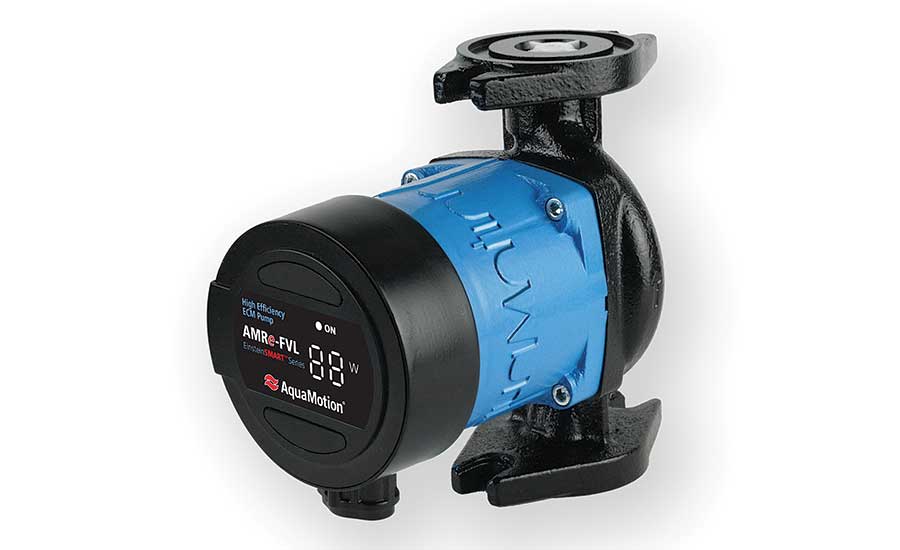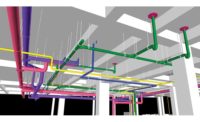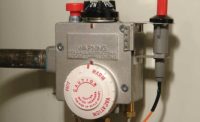It’s time to get serious and prepare for the inevitable.
Taco Comfort Solutions Vice President of Governmental Affairs and Sustainability Mark Chaffee highlights the industry’s continued preparation for the 2020 deadline for the new pump-efficiency standards set by the U.S. Department of Energy.
“People are focused on energy usage and pushing high-efficiency technology. At Taco, we’ve spent a lot of time, money and effort redesigning our pumps’ hydraulics to exceed the new DOE standards,” he says. “But, by also matching up that improved hydraulic efficiency with advances in both ECM motors and enhanced self-sensing variable-speed drives, we’ve been able to increase total operational efficiency as well.
“That’s really the heart of what the DOE regulation is driving – innovation across pumps, motors and drives.”
Chaffee and other Taco specialists are crisscrossing the U.S. for meetings with specifying engineers. Chaffee is concerned the understanding of what the new rule will mean to the engineers hasn’t fully taken hold.
“They know it’s coming, but 2020 seems so far away, the DOE rule just hasn’t been on their radar yet,” he explains. “It’s 18 months away and in pump years, that’s a nanosecond, especially for those big projects where it might be a year-and-a-half between the completion of design submittals and when the mechanical room is actually installed. Those projects are likely to be affected.”
 Bell & Gossett Product Specialist Andrew Omer-Cooper notes that ECM circulators allow for “greater system control and flexibility.” Photo courtesy of Bell & Gossett
Bell & Gossett Product Specialist Andrew Omer-Cooper notes that ECM circulators allow for “greater system control and flexibility.” Photo courtesy of Bell & Gossett
Chaffee adds: “As we approach the Jan. 27, 2020 date, all of us in the pump world are going to need to start talking a lot more about what it means, what the changes are and how engineers are going to be affected. They may need to hear about this several times before they achieve their ‘a-ha’ moment.”
Three important letters
Bell & Gossett Product Specialist Andrew Omer-Cooper points to ECMs — electronically-commutated motors — as the critical part of energy-efficient circulators.
“The enhanced technologies of the latest ECM circulators assist specifying engineers in their design of high-performing hydronic systems by allowing greater system control and flexibility,” he says. “ECMs help to reduce friction losses in the pump, offer quicker startup in a system and enable variable-speed operation to respond to system demands, all of which improve efficiency.”
Bell & Gossett will be introducing its ecocirc XL 3-phase smart ECM large wet-rotor circulator featuring built-in intelligent controls and smart communication capabilities. Omer-Cooper states the new unit will help end users “maximize energy efficiency without compromising system performance.”
“It can reduce the number and types of pumps required for typical building HVAC and plumbing installations,” he says. “This benefits a range of environments, including universities, office complexes, airport terminals, manufacturing facilities and similar buildings.”
AquaMotion President Hans Kuster agrees ECMs are critical because they can protect circulators from overheating, locked rotors and improper voltage.
“The reason electronics are needed for permanent magnet motors is to know which way the motor will turn and to start the motor,” he says. “The larger the circulator, the larger the energy savings with ECM-driven pumps. ECM-driven pumps in commercial applications are the future. They are the future because they save energy.”
Money in the back pocket
Chaffee believes local utility companies, specifically in the form of rebate-incentive programs, will play a critical role in helping to advance the use of high-efficiency pumps across the commercial and residential markets.
“Last year, North American utilities collected over $9 billion to spend on energy efficiency,” he says. “A lot of it has gone toward lighting over the years. But in 2020 there is a ‘lighting cliff’ where many types of LED lights will become required or code. So these utilities won’t be providing these incentives anymore.
 AquaMotion President Hans Kuster believes ECM-driven pumps “are the future because they save energy.” Photo courtesy of AquaMotion.
AquaMotion President Hans Kuster believes ECM-driven pumps “are the future because they save energy.” Photo courtesy of AquaMotion.
“They are going to have to find other places to buy energy efficiency. This, on top of what some states are doing in terms of their own policies regarding green energy production, zero-net energy buildings and clean fuel … that’s going to come together to drive a lot of incentives toward high-efficient mechanical products and systems instead of lighting.”
A lot of engineers are going to be able to take advantage of specifying higher-efficiency systems for their customers at a cost-effective rate. But, they’re going to need the knowledge about their local utility-incentive programs and which pumps qualify to be able to do it. There’s currently an education gap, but the pump manufacturers and utilities are working hard to close it, especially as more and more utilities introduce pump-incentive programs.
Taco’s Oe pump product lines feature an ECM motor which provides a quieter and smoother operation and exceeds the DOE regulations. The Oe line provides energy savings with its permanent-magnet motors operating with two magnetic fields. One is in the rotor and the other is in the stator. The Oe’s control board continuously monitors the load on the motor and adjusts power consumption accordingly. This makes the motor very efficient at partial-load conditions, the company notes.
“Now that Taco ECM technology goes up to 30 horsepower, it’s taking those efficiency gains and spreading it across a broader product range,” Chaffee says. “It’s bringing those energy-saving benefits to a much bigger audience. Then by adding on self-sensing drives, you have a fully-integrated intelligent product.”




